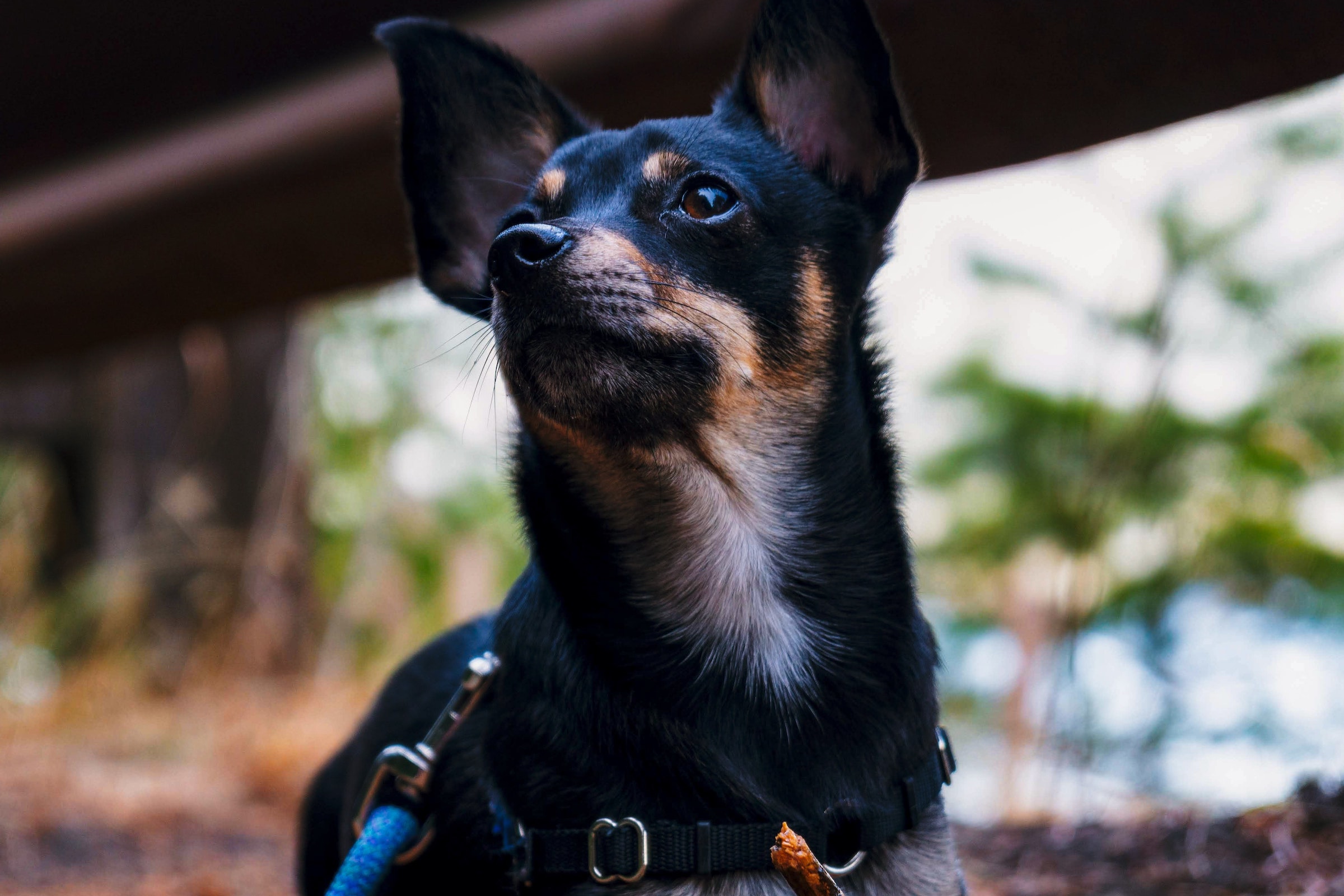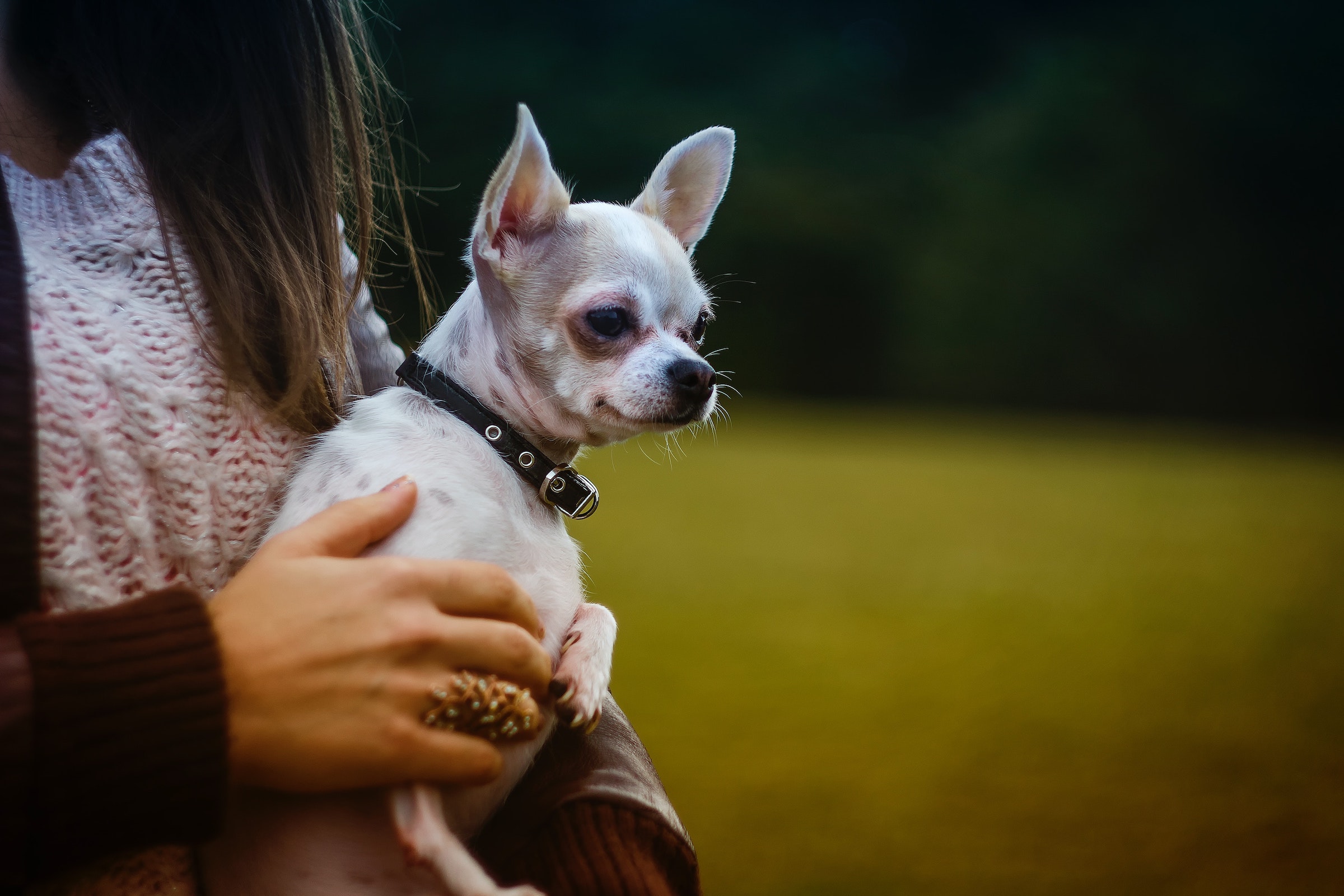It may seem like an odd question at first, but there’s reason to think about whether your Chihuahua should wear a collar and leash. As small and fragile as they are, sometimes it seems like even the wind could hurt them. Nevertheless, this fierce breed has shown time and again that small can be strong.
Many first-time Chi owners find themselves Googling “Should a Chihuahua wear a leash?” because of their dog’s combined tiny size and mighty power — it doesn’t take much pulling before the panting and coughing begin. No matter your fur baby’s breed, this can be distressing to see as a dog owner. That’s why it’s important to read up on safety tips and breed advice when shopping for a Chihuahua collar and leash. Don’t worry! Here’s what you need to know.

Chihuahua collar and leash injuries
Tiny dogs like Chihuahuas are more susceptible to injury to their neck and windpipe because of their small size. Although it’s not a common occurrence, it is possible for a small dog to injure a number of organs and even limbs simply by pulling too hard on a leash that’s attached to their collar.
Since collars sit right on top of the thyroid gland in a dog’s neck, chronic pressure and inflammation of the thyroid are risks. So is nerve damage, which can result in a range of symptoms from numbness and tingling to the loss of limb movement altogether. Probably the most concerning collar injury is a collapsed windpipe, which Chihuahuas may be at higher risk for, considering how small their windpipes are already.
Should a Chihuahua wear a leash?
Despite concerns over injuries due to the Chihuahua’s small size, keeping your dog leashed is essential to her safety. It’s easy for a small dog to get lost or carried away with a distraction, so whether you’re navigating a crowded place together or just going for a walk, she should be on-leash. Keeping your pup restrained will make your life exponentially easier, too.
Another item of concern for dogs as tiny as Chihuahuas is the collar, since even lightweight ones can distress your Chi’s fur, skin, and even windpipe. Still, collars can have a benefit when chosen carefully and not worn 24/7 or in dangerous situations (like while in a crate). If your dog is not microchipped, she should wear a collar and tags for identification purposes, especially while playing in a dog park or visiting public places.
So, what can you do, then, if your Chihuahua needs to wear a collar and leash without risking injury?

How to prevent Chihuahua collar and leash injuries
Luckily, one easy-to-find canine accessory will change everything for your small dog — a harness to wear while walking. Although like any new piece of clothing, a harness will take some getting used to, your dog will get the hang of it eventually, and your walks will become easy as cake.
Because Chihuahuas are more likely to pull on the leash, wearing a harness will put less pressure on their neck and more pressure on their body, which won’t hurt them. If you attach their leash directly to their harness and not the collar, you’ll have more control over them and how they move. It’s a lot harder to slip out of a harness than to quickly back out of a loose collar, too, if you think about it. No escapes here, please!
Look for a harness that fastens in the front, at your dog’s chest, or on her back for extra control. You may want to consider a padded harness such as the Metric USA Comfort Fit Harness, which is just as cute as it is functional. This particular harness has two D-ring attachments to keep escape artists in, so you’ll know your tiny friend is always safe.
Remember to keep your pup’s collar and tags on if you’re out and about in a public space — safety first! If you’re concerned about the health effect your dog’s collar is having, it won’t hurt to upgrade your pup to a lightweight collar that won’t put so much pressure on her neck.
Just because your fur baby is tiny doesn’t mean she needs to be put at risk just to go for a walk. Luckily, you can make a few small changes — and purchases — now that you’re armed with the knowledge you have. Before you know it, your feisty little Chihuahua will be pain-free, comfortable, and so happy! And that’s all any pet parent could want, right?
Editors' Recommendations
- Taking your dog’s collar off at night: Safe move or safety risk?
- Looking for signs your dog has ticks? These telltale symptoms mean you have a flea or tick problem
- 4 effective ways to house-train your stubborn little Chihuahua
- How much water should your puppy drink in a day? Here are the factors to consider
- Are Starbucks Puppuccinos bad for dogs? Here’s what veterinarians have to say




